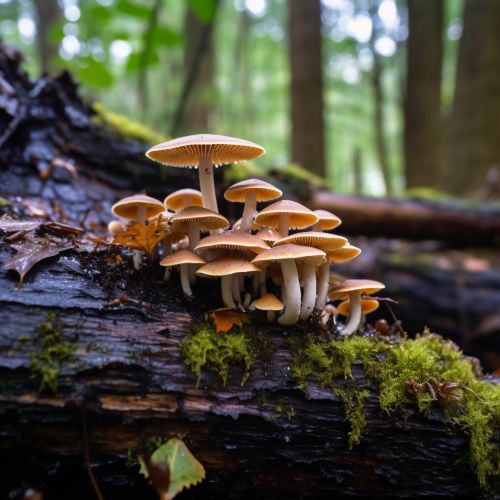The Role of Fungi in Bioremediation of Polluted Environments
Introduction
Bioremediation is a process that utilizes organisms to neutralize or remove pollutants from a contaminated site. Among the organisms used in bioremediation, fungi have been recognized for their unique ability to degrade a wide range of pollutants. This article explores the role of fungi in the bioremediation of polluted environments.
Fungi and Bioremediation
Fungi are a diverse group of eukaryotic organisms that include yeasts, molds, and mushrooms. They are known for their ability to break down complex organic compounds, making them ideal candidates for bioremediation. Fungi possess a unique set of enzymes, such as laccases, peroxidases, and cytochrome P450 enzymes, which allow them to degrade a wide range of pollutants, including hydrocarbons, heavy metals, and pesticides.


Mechanisms of Fungal Bioremediation
Fungi employ several mechanisms in the bioremediation process. One of the primary mechanisms is the production of extracellular enzymes that degrade pollutants. These enzymes are secreted into the environment and break down pollutants into less harmful substances. Another mechanism is biosorption, where fungi absorb and accumulate pollutants within their cells. Fungi can also form symbiotic relationships with plants, aiding in the uptake and degradation of pollutants.
Types of Fungi Used in Bioremediation
Several types of fungi have been used in bioremediation, including white-rot fungi, brown-rot fungi, and yeasts. White-rot fungi, such as Phanerochaete chrysosporium and Pleurotus ostreatus, are particularly effective in degrading a wide range of pollutants due to their ability to produce a variety of extracellular enzymes. Brown-rot fungi, such as Gloeophyllum trabeum, are known for their ability to degrade lignin and cellulose, making them useful in the bioremediation of wood waste. Yeasts, such as Candida tropicalis, have been used in the bioremediation of heavy metals due to their high biosorption capacity.
Applications of Fungal Bioremediation
Fungal bioremediation has been applied in a variety of settings, including soil remediation, wastewater treatment, and air pollution control. In soil remediation, fungi are used to degrade pollutants such as pesticides, petroleum hydrocarbons, and heavy metals. In wastewater treatment, fungi are used to degrade organic pollutants and absorb heavy metals. In air pollution control, fungi are used to degrade volatile organic compounds and absorb particulate matter.
Challenges and Future Directions
Despite the potential of fungal bioremediation, there are several challenges that need to be addressed. One of the main challenges is the need for more research to understand the mechanisms of fungal bioremediation and to identify more efficient fungal strains. Another challenge is the need for more field trials to validate the effectiveness of fungal bioremediation in real-world settings. Future directions in fungal bioremediation research include the use of genetic engineering to enhance the bioremediation capabilities of fungi and the development of integrated bioremediation systems that combine fungi with other organisms.
